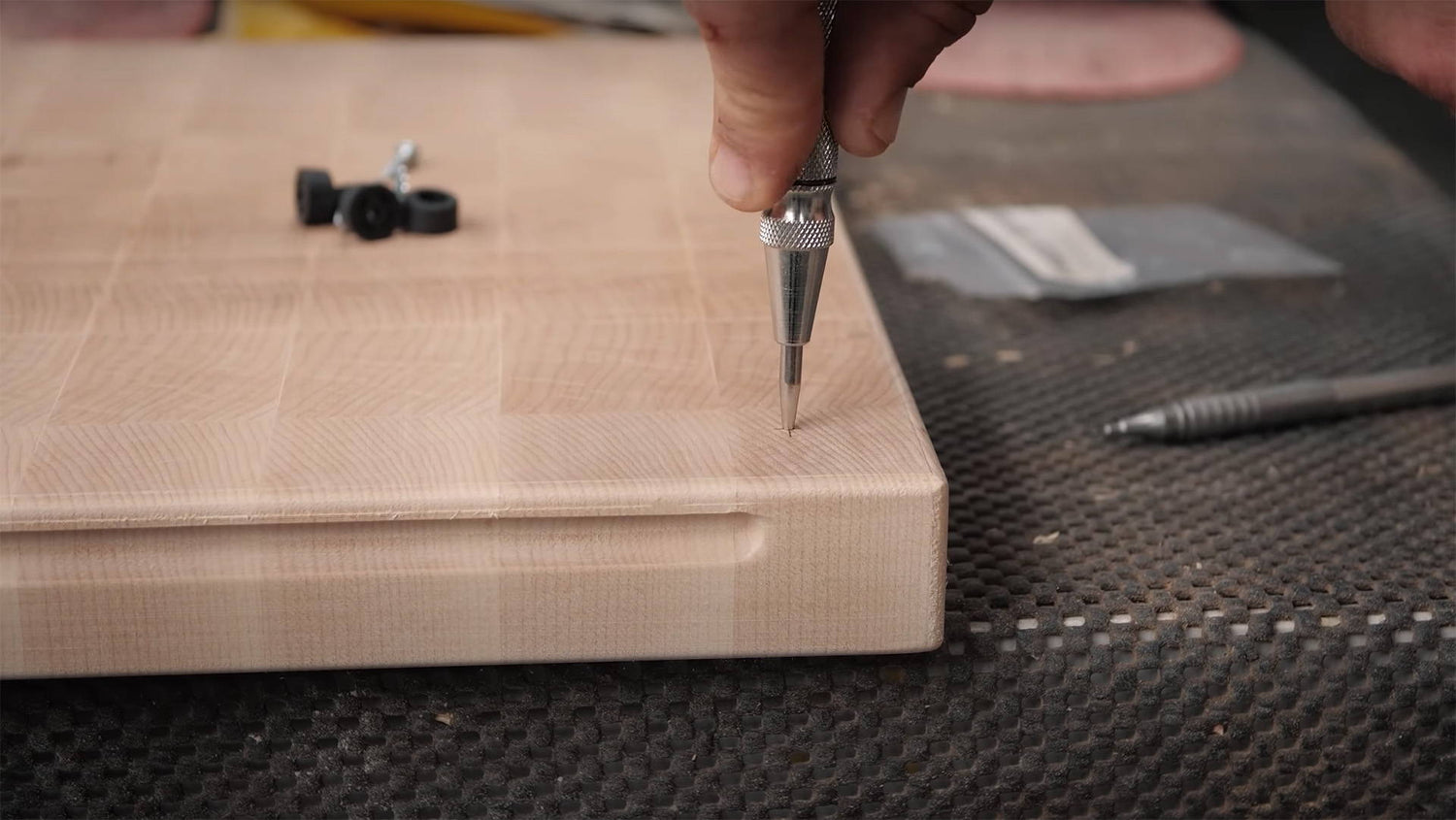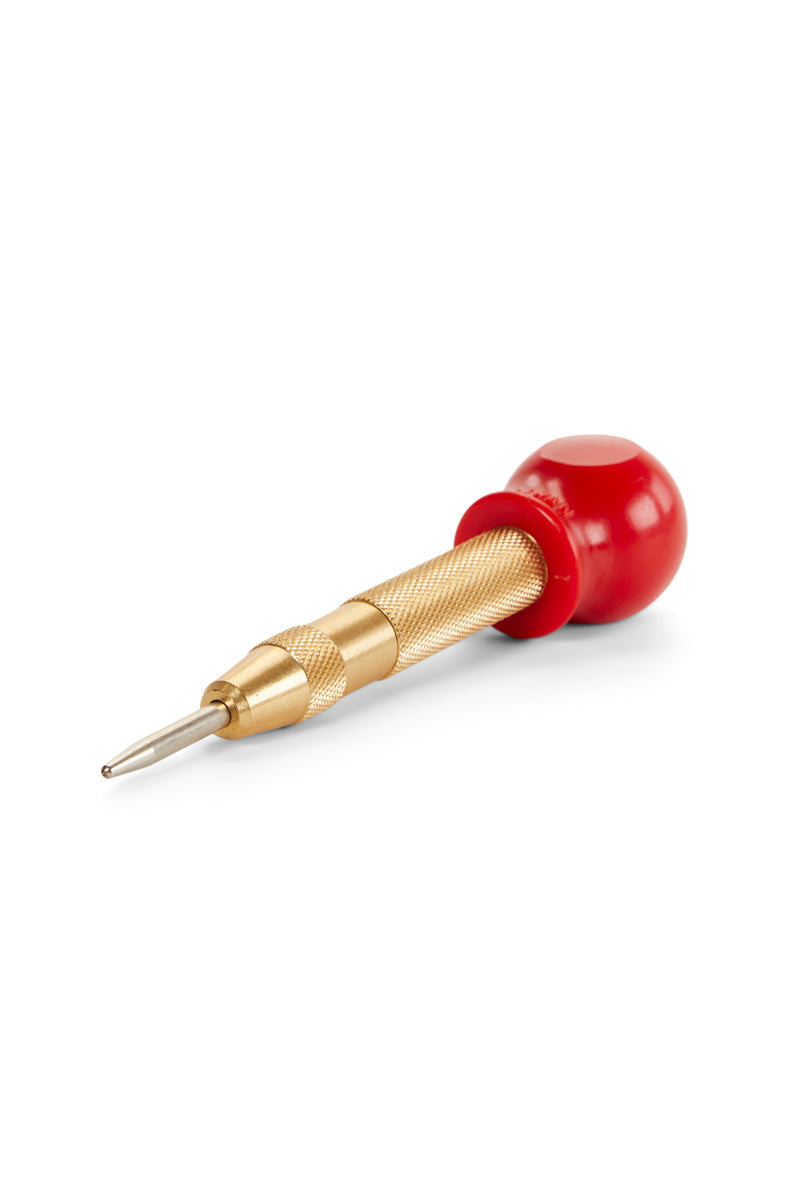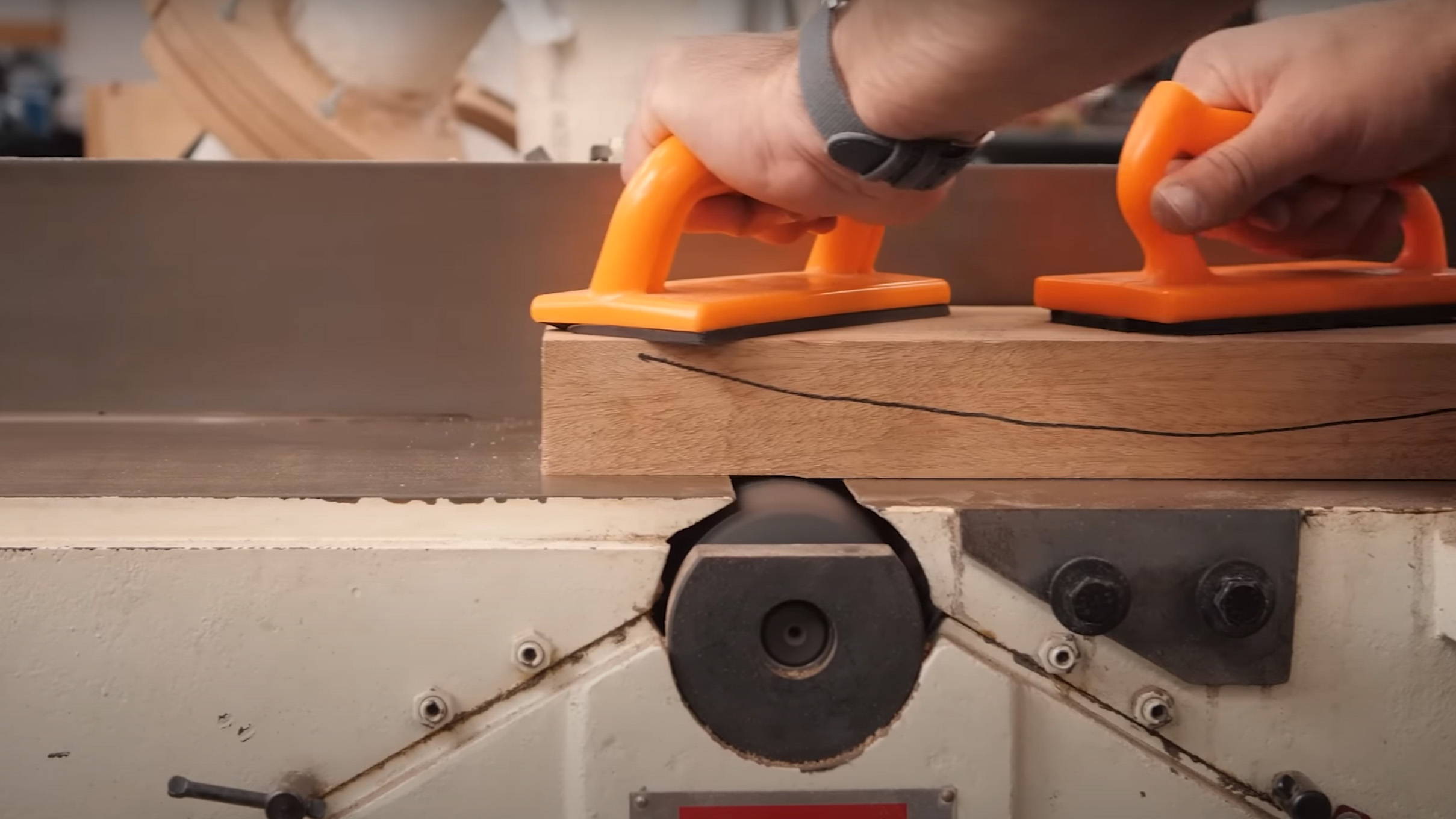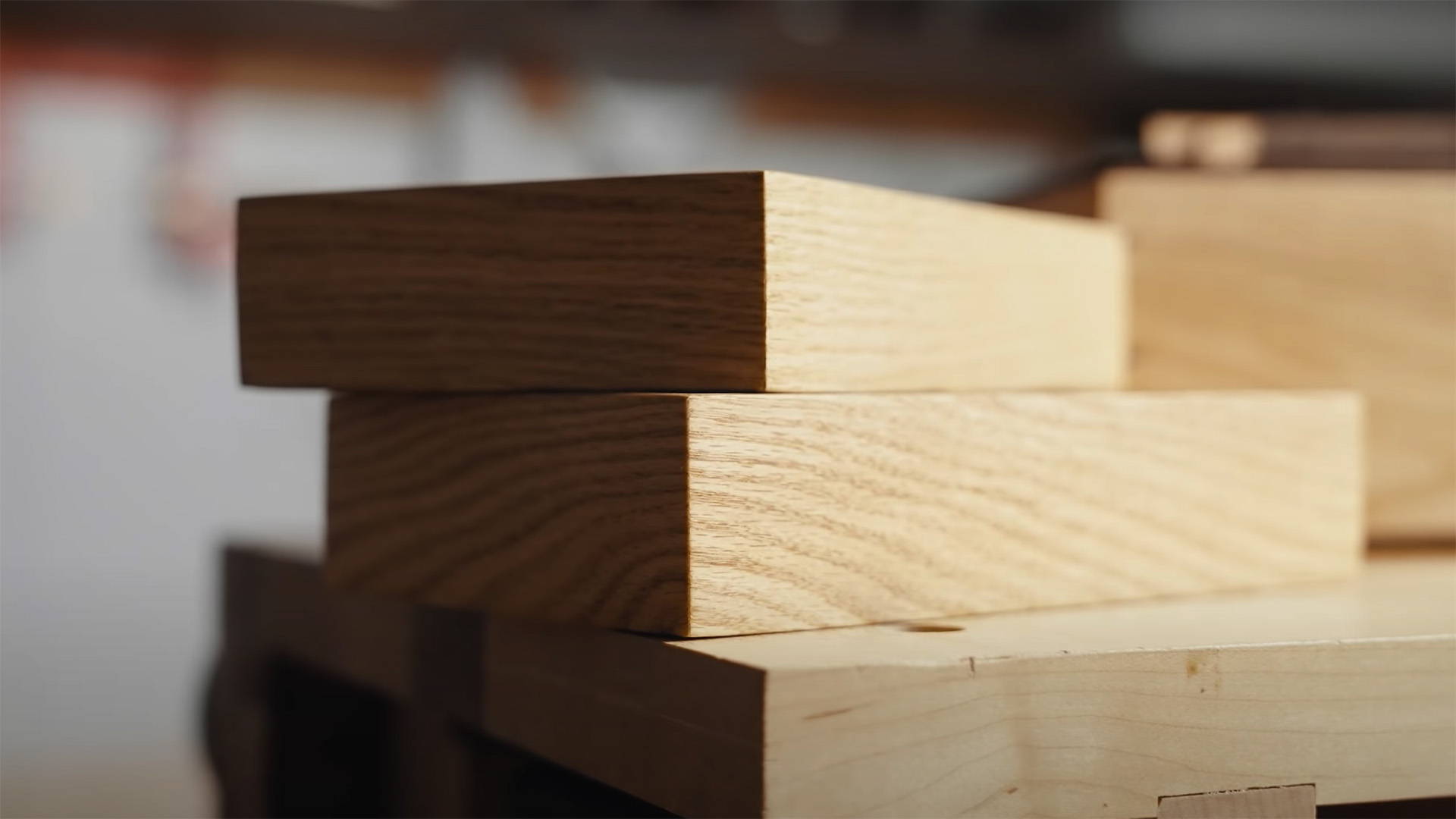A center punch is like an awl that had too many energy drinks and just found out it’s getting laid off.
These suckers pack a punch (as the name implies).
I keep my center punch on me at ALL times when I’m in the shop.
Because when it comes to drilling accurate holes or precisely placed screws… there’s no better tool for guiding your bits.
But here’s the thing.
As simple as they are, center punches take a little getting used to. Especially if you’re used to your grandpa’s ice pick awl (don’t ask what he used it for).
So to lower the learning curve, today I’m giving you 3 critical tips for using a center punch like a pro.
1. DO LAYOUT RIGHT
A center punch is used when you need a hole or screw to be drilled in an exact location.
So the first step is pinpointing that location to a tee. And that’s where the “X” technique comes in.
Let’s say you’re going to drill some rubber feet into the bottom of a cutting board.
Set your combo square fence against the edge of the cutting board. Then adjust the blade until the end is where you want to place one of the rubber feet.
Lock the combo square in position, set your marking knife blade flat against the edge, and mark a shallow line.
Now reference the square off the adjacent edge and scribe a second line, creating an “X.”
Repeat this process for all four corner
You can now set the point of your center punch where those lines intersect — and know it’s exactly where it needs to be.
2. HOLD THE PUNCH VERTICALLY
This is the BIG mistake people make with center punches.
When you engage the “punching” mechanism by pushing the handle down, you need the center punch to be VERTICAL.
As I said before, these tools pack a punch.
And if you’re holding it at a slight angle, the force can create a divot that’s slightly off-center of where you actually want it.
So just remember: When you engage the center punch, make sure it’s as close to perfectly perpendicular to the board surface as possible.
3. ADJUST THE PUNCH POWER
Some center punches (like the one we carry) allow you to adjust the force of the punch mechanism.
This is super useful for adapting the tool to your needs. So USE IT.
For example, if you need to drill pilot holes for small screws — lessen the punch power for a smaller divot.
But if you need to guide the spur on a forstner bit, crank that sucker to 11 to create a large divot that keeps your hole centered.
You can also adjust the punch power based on the material you’re using.
Softwoods require a lot less force, while hardwoods will require more. And plywood falls somewhere in between.
Want to know more tips and tools for woodworking accuracy? Read this.
Any other center punch tips of your own? Share them in the comments below!
Follow us on Instagram @katzmosestools, on TikTok @katzmoseswoodworking, and check out my YouTube channel for more great woodworking content...
And as always, STAY SAFE IN THE SHOP!












6 comments
Urban K
Good tips, as usual.
I would add, that in critical cases you should make a “pilot divot” with a sharp awl, then punch. Or, if you are less proficient, like myself, do that more or less every time.
Good tips, as usual.
I would add, that in critical cases you should make a “pilot divot” with a sharp awl, then punch. Or, if you are less proficient, like myself, do that more or less every time.
Randall Roberts
Thanks. I had forgotten it had an adjustable punch pressure. Way cool tool.
Thanks. I had forgotten it had an adjustable punch pressure. Way cool tool.
Rick Hayhoe
Jonathan’s crosshairs cuts might ensure a more accurate punch on softwood, where winter growth rings on quarter or riff sawn wood can deflect a punch by as much as a 16th of an inch or 2 millimeters. I’m using a lot of northern European pine these days, so the idea appeals. I’ll try it. Today.
Jonathan’s crosshairs cuts might ensure a more accurate punch on softwood, where winter growth rings on quarter or riff sawn wood can deflect a punch by as much as a 16th of an inch or 2 millimeters. I’m using a lot of northern European pine these days, so the idea appeals. I’ll try it. Today.
jeff lesueur
How do i center punch the center of a hole, where diameter can be 1/4, 5/16, 3/8 or 1/2, for example drilling a hole for brass bolt inserts in maple or walnut? I put a point on some dowels but not the best solution…. thanks.
How do i center punch the center of a hole, where diameter can be 1/4, 5/16, 3/8 or 1/2, for example drilling a hole for brass bolt inserts in maple or walnut? I put a point on some dowels but not the best solution…. thanks.
Will Leech
Keep it sharp by taking it apart, mounting it in a drill and rubbing it over some sandpaper or a diamond stone.
They also make great glass breakers in the event of an emergency!
Keep it sharp by taking it apart, mounting it in a drill and rubbing it over some sandpaper or a diamond stone.
They also make great glass breakers in the event of an emergency!
Metro S.
When I use an enter punch, I hold the punch in my right hand and rest the tip of the punch across the finger nail of my left index finger at an angle of 45 deg. or so. I can then flex my left finger slightly to place the tip of the punch on the mark. I then press and raise the punch to vertices before making the mark.
When I use an enter punch, I hold the punch in my right hand and rest the tip of the punch across the finger nail of my left index finger at an angle of 45 deg. or so. I can then flex my left finger slightly to place the tip of the punch on the mark. I then press and raise the punch to vertices before making the mark.